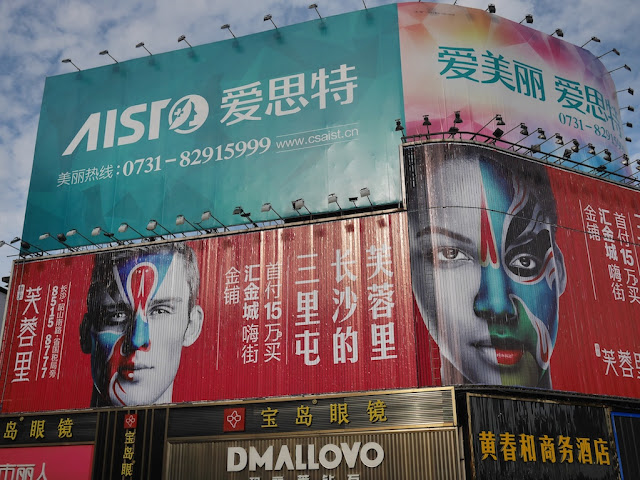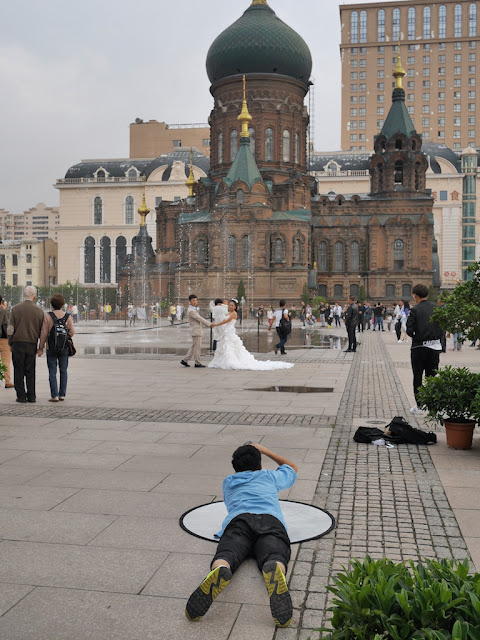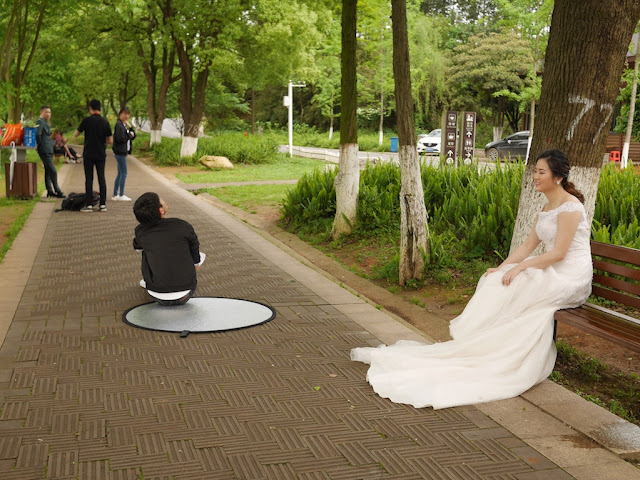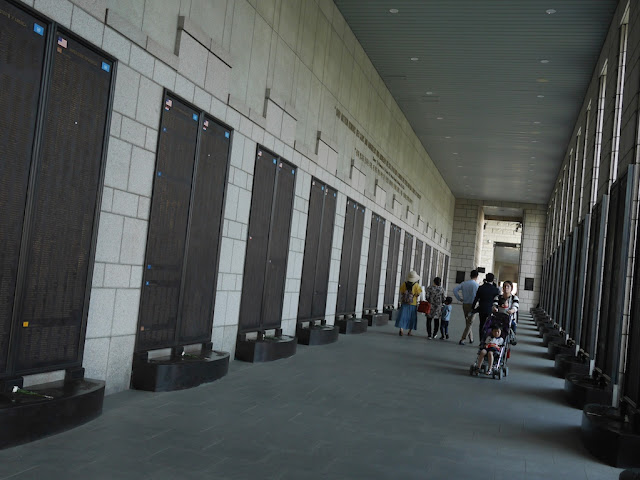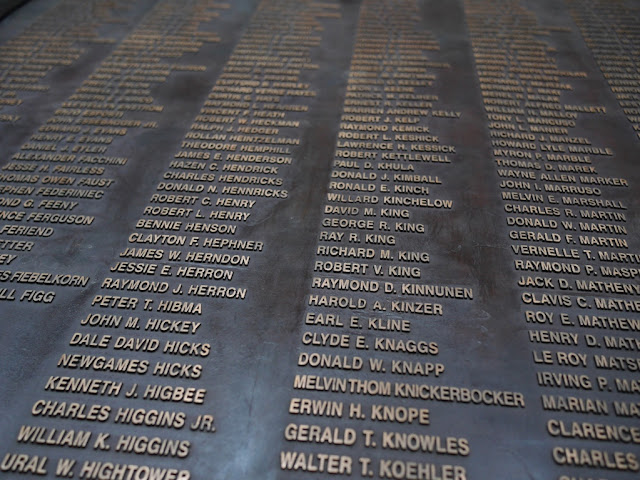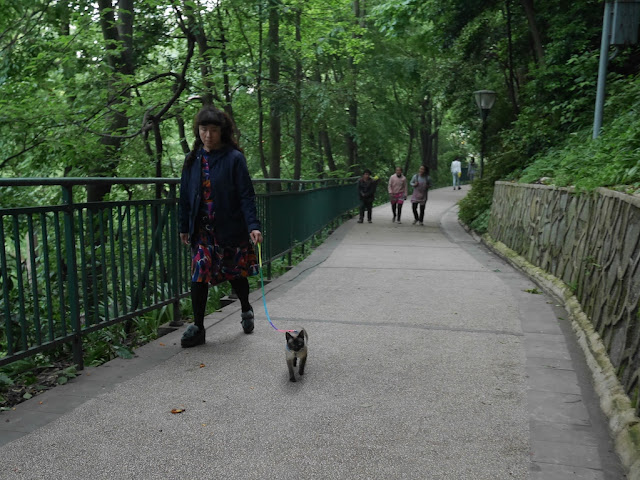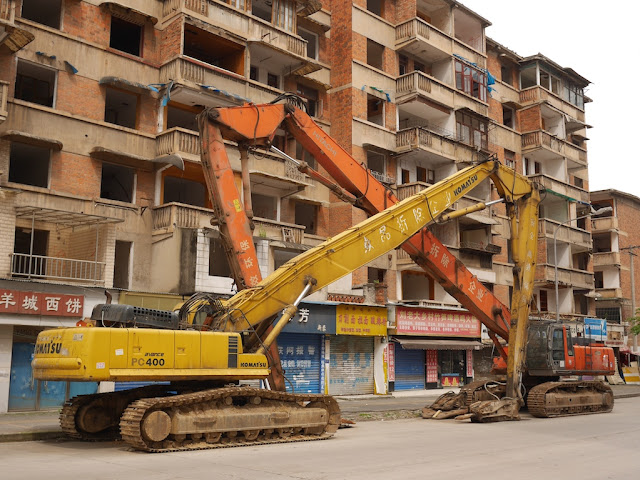Not so long ago in Guiyang, I woke up early one morning and caught a taxi. At the first intersection, the driver took an unexpected turn. Based on the traffic signals, it seemed plausible it was a wise choice, and I said nothing. A couple of blocks later, he signaled to make a turn heading in a direction nearly opposite of where I was headed. It didn't seem likely this choice was in my best interest, so I asked why he wasn't turning a different direction on another road. After some back and forth, I mentioned I had checked the routes on Baidu Map. The best option was rather clear and the most reasonable alternatives didn't involve what he had in mind.
He said "Oh, you checked Baidu Map. Then we will go that way."
It worked out pretty well.
Once I was inside the departure hall of the Guiyang North Railway Station, I wasn't surprised by the small crowd. I was catching an early morning train at 6:52 a.m. after all.
But I found it notable that the retail space on the upper levels on two sides of the departure hall, a design common in China's larger new railway stations, appeared to be completely vacant and lacking any restaurants or cafes. There wasn't even a
Texas Burger. It reminded me of a similar pattern I saw
five years ago at the Shenzhen North Railway Station — a place that is more occupied and busier now.
Soon I was on the high-speed train, which departed on schedule. Like my previous two trips, I was traveling a route for the first time. This route spent less time in tunnels than my
previous trip though. And the train traveled at a much higher speed (about 300 km/h) than on the previous two routes (which maxed out at about 200 km/h).
A college student sitting next to me on the train kindly offered a welcomed banana, providing some balance to having had a
mangosteen stolen in Guiyang. After discovering I liked spicy foods, she then gave me two small packages of spicy treats. One of them was especially tasty, and I was confident I was not going to go short on my salt intake for the day.
When I later mentioned I was catching a flight out of the Changsha the very next day, she asked whether I couldn't have flown out of Guiyang instead. Indeed, I would have done that had I better predicted things when I purchased the ticket. My schedule during the past month or so hadn't gone exactly as first planned. I spent more time than expected in Hengyang, which meant I had to skip Yongzhou. I then spent more time than expected in Guilin, which meant I had to skip Liuzhou and some other potential locations. I had just spent more time than expected in Guiyang, which meant I had to skip Kaili and Huaihua. In short, I wasn't arriving in Changsha a few days before my flight from a closer city as I had first expected. All of this reflects a tension between spending more time in individual cities versus visiting more cities. Both have their merits.
So after a three hour and twenty-something minute train ride, I had about 24 hours in Changsha. I initially thought I would put together a "day in Changsha" post similar to the one
when I was last in Changsha, which also involved a one day stay followed by a flight. But that visit had occurred less than half a year after an earlier visit to Changsha, when I spent much more time there. A quick catchup here made sense. But this visit involved a one and half year gap from the previous one day visit and a nearly two year gap since my last extended stay. Not only was there much more which had changed, I more effectively maxed out my time. By the end of the day I wasn't just exhausted, I felt like all of what I had found deserved more than being put together in a single post.
So instead of a new "day in Changsha" post, for now I will share a single scene from Huangxing Square in Changsha which reminded me of scenes I have shared
from Guangzhou and
from Shenyang.
Yes, on the digital billboard is yet another blissfully blue baijiu advertisement from Yanghe Distillery. But instead of featuring their Tianzhilan baijiu, it features their Mengzhilan M6. which
according to Yanghe:
. . . inherits the element of the ancient Yanghe Liquor, and transforms itself gracefully in the new historical period by perfectly interpreting the definition of the treasured Liquor with pure and exquisite technology.
How about that?
Anyway, more soon. I will be in less of a exploratory mode during the next few weeks, so I hope to get slightly caught up on some things. Just need to decide what is next. Perhaps more about Changsha. Perhaps where I headed after Changsha. Perhaps where I was before. Perhaps some other new historical period.


